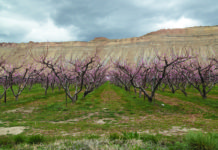What was once a Junior College in 1925 with just over 39 students, Colorado Mesa University (CMU) has since grown to over 11,000 students as of 2019. And with that growth comes a natural increase in diversity.
At the time of the school’s establishment, it’s a safe bet that the first 39 Mavericks in attendance likely hadn’t ventured far to come to the tiny school nestled in rural Grand Junction.
In the early twentieth century, the city of Grand Junction wasn’t necessarily considered a cultural hub. Because of its isolated geography, the large majority of the people feeding into the school throughout the 1900s were — primarily — Western Colorado residents.
Yet, the school’s numbers have risen steadily, which has resulted in people coming to CMU from other parts of Colorado, the United States and even abroad.
Before the school transitioned into a university, much of the student populace comprised of native Grand Junction residents. Often times students from Fruita, Montrose and Palisade fed into the small school, but diversity wasn’t necessarily CMU’s forte.
But now, it isn’t uncommon to find students who have ventured from great distances to attend CMU. In 2019, students aren’t solely residents from within the valley. In fact, CMU’s newfound diversity isn’t oriented from people outside the valley or even outside of Colorado; they’ve come from Nepal, Saudi Arabia, France, New Zealand, Nigeria and Columbia, just to name a few.
Despite the newly established international presence at CMU, students are still divided on the extent of the university’s level of diversity.
“I think CMU is relatively diverse. I’ve met a lot of people from outside the U.S. here and have gotten to learn about their culture, which is pretty cool,” Whitney Erler, a freshman studying international business explained.
And Erler isn’t the only one with this opinion. “…Mesa is pretty darn diverse considering where I was from (Littleton, Colorado), also known as white suburbia,” Tyler Meyers, a CMU freshman joked. “I like it here.”
While many students have come to CMU and noticed a substantial increase in diversity from their hometown, there’s also many students who seem to think that there’s not enough diversity on campus. Many of those students preferred to remain anonymous.
However, one of The Criterion’s staff writers, Jaremy Goggins, made note that in terms of racial diversity, the campus is lacking. “I don’t really think it’s (CMU) very diverse at all. I feel like in most of my classes around campus it’s like, predominantly Caucasian.”
As far as racial diversity is concerned, the website known as CollegeSimply rated CMU as “low” in terms of diversity. The website, which can be found here,states that “Students at Colorado Mesa University are mostly White with a smaller Hispanic population. The school has low racial diversity.”
The website goes on to list the racial demographics of the school, saying that 70 percent of students are white, 17 percent are Hispanic, 3 percent are b
Based off those statistics, CMU clearly isn’t as diverse as some may think. Unfortunately, there is no census of religions and other belief systems, and socioeconomic status is generally private information.
However, as far as racial diversity goes, CMU consists predominantly of Caucasians.
So the question becomes, how can the school become more diverse?
Sure, diversity has significantly increased since the school’s establishment in 1925, but it seems as if CMU still has less racial diversity than other schools.
Nonetheless, CMU has certainly established an international presence that it once lacked. From a school that had consisted exclusively of Grand Junction residents, the fact that people are now coming to CMU from not just other parts of the state, but other parts of the country and the world, is without a doubt a step in the right direction.



